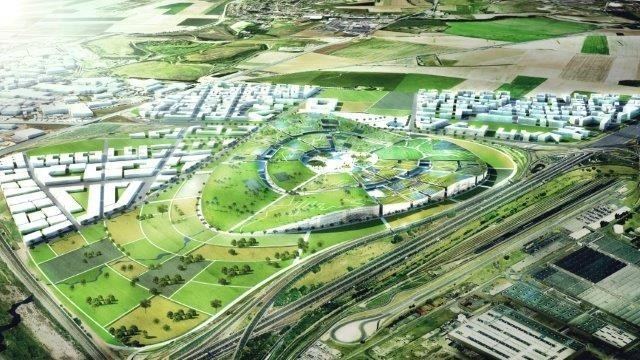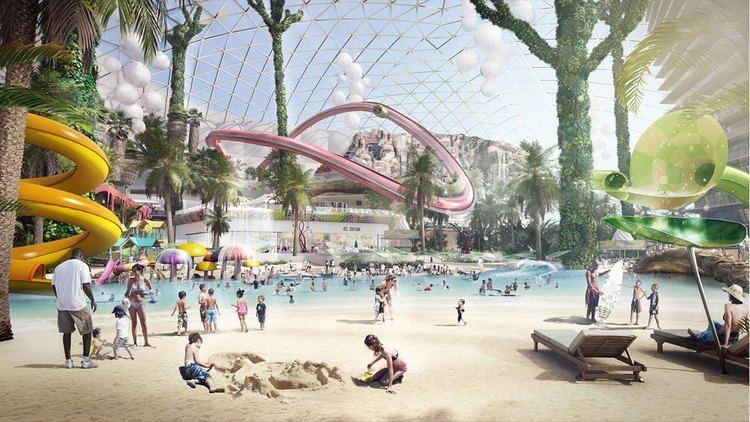Europacity le projet pharaonique du grand paris
EuropaCity is a French planned development set of Paris, for completion during the 2020-2021 year. It was introduced to the public as an international invited competition for design of an 800,000 square metre cultural, recreational, and retail development located in the Triangle de Gonesse region of France. The main purpose of the project is to combine dense urban development with open space. The winner, was the architectural group Bjarke Ingels Group, announced in Spring 2013
Contents
- Europacity le projet pharaonique du grand paris
- Europacity modifie son projet
- Competition
- Location
- Bjarke Ingels Group
- BIG Design
- References

Europacity modifie son projet
Competition

The competition for the design of EuropaCity was an international invited competition. Four international architectural teams were invited to participate: Bjarke Ingels Group (Denmark), Manuelle Gautrand (France), Snøhetta (Norway), and Valode & Pistre (France).

The decision process consisted of two phases. The first aspect considered how well each group accounted for an inclusion of EuropaCity within the greater area of Roissy-en-France and within the public development project already taking place in and around Gonesse. The second stage focused more directly on the architectural sketch itself.
Two presentations were given during the span of time that the competition endured, the first at the Maison de l’Architecture in Ile-de-France in October 2012 and the second in the cultural space in Gonesse Coulanges between December 2012-February 2013.
Location
The project location was determined to be in the northern suburbs outside of Paris, in Triangle de Gonesse. While the region is currently largely agricultural, it also falls along the route from the Charles de Gaulle Airport to Paris and is, therefore, an area that attracts a heavy amount of traffic. The creation and implementation of EuropaCity will take place as part of a wider development known as the Triangle de Gonesse urban project or the Triangle de Gonesse development project.

The purpose of this development is to provide a connection between urban Paris, the suburbs, and the surrounding farmland. The ideal project design is one that seeks to facilitate and foster the connections between these diverse, but interdependent areas through the creation of a dense, urban development Additionally, the development will seek to combine the efficiency of the urban setting with the healthfulness of country living.
Bjarke Ingels Group
The Bjarke Ingels Group (BIG) is a "group of architects, designers, builders, and thinkers" founded in 2005 in Copenhagen, Denmark. More recently BIG opened a second office in New York City. This firm deals mainly with the areas of architecture, urbanism, and research and development. They have had projects throughout Europe, North America, Asia, and the Middle East. BIG’s main vision is primarily concerned with these various areas of interest in the context of the constantly evolving nature of contemporary life.
The group is led by a number of partners: Bjarke Ingels, Andreas Klok Pederson, Finn Nørkjær, David Zahle, and Jakob Lange. Some recently completely projects include: the Mountain Dwellings from 2008 and 8 House from 2010 in Ørestad, Copenhagen, the Danish Pavilion from EXPO 2010 in Shanghai, China, and the Beach and Howe Tower in Vancouver, BC, Canada.
BIG Design
The winning design for EuropaCity is centred on the vision of "urban form that combines dense city and open landscapes". Collaborators on the project include architectural firms Tess, Transsolar, Base, Transitec, and Michel Forgue. EuropaCity is set to be the "largest cultural, commercial, and leisure destination in Europe". This enormous development will cost around $2 billion to construct and will consist of somewhere around 500 shops, hotels, amusement parks, and a water and snow recreational facility. It is estimated that the development will lead to the creation of at least 17,500 permanent jobs and will attract up to 30 million visitors per year.
BIG’s design aims to have all activity surrounding the main theme of celebrating Europe's diversity through the experience of urban life and cultures. The surrounding living space will be connected to the dense, urban fabric of EuropaCity. To attract maximal amounts of visitors, the development will be serviced by the RER, the rapid transit system in France that services Paris and its surrounding suburbs. Overall, EuropaCity will serve as a means to examine the urban and natural potential of the space.
All services, recreation, and commerce will be organised along a pedestrian walkway that forms a continuous loop. The continuous, circular walkway is simplistic and will allow pedestrians to take in the full scope of the city. Additionally, all of the interwoven, curvilinear walkways are designed to mimic the intimacy of Paris streets. The development will consist entirely of dense, urban, multi-use space that encompasses a "mix of shopping, entertainment, and cultural activities". Aside from the RER services bringing people to and from the city, a public bicycle system and electric buses will provide quick and efficient transportation within the city itself.
The roof is designed to be a landscape of green park space complete with valleys and ridges, a result of abiding by the zoning codes and height restrictions that vary across the area. Not only will the green roof provide scenic views of the Parisian skyline, but it will also serve a number of functional services. It will provide insulation, treat grey water, and infiltrate rainwater for use in the city. This green roof will serve to epitomize the sustainability ideals and public leisure space that EuropaCity is all about.
